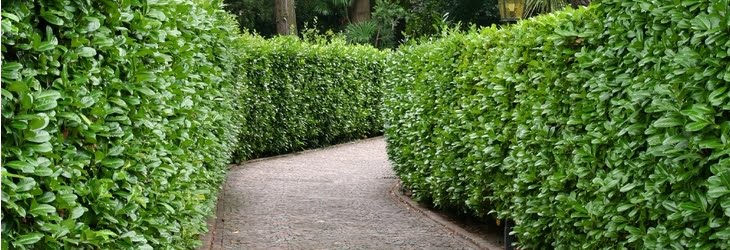Hedge trimming guide
01/06/2015

Late spring and summer is a great time to get on top of all that garden maintenance. Trimming those hedges will no doubt be one of the jobs on your to-do list – and if you’re a gardener by trade, you’ll have no doubt been booked up for jobs of this sort over the next few weeks.
With this in mind, we thought it was about time we covered the basics of hedge trimming in our Browns Ladders Hedge Trimming Guide…
1. Select the right tools for the job
Decide what your job requires. If it’s just a small hedge that requires attention a pair of hand shears may be fine. For bigger jobs you’ll need an electric or petrol powdered hedge trimmer if you don’t want to be at it all day!
With any tools you use you’ll need to consider the weight (and how long you’ll comfortably be able to hold it for), the blade length (remembering to ensure the blade is sharp and well maintained), and tooth spacing. For the majority of hedges 16-20mm tooth spacing will be fine but for larger hedges you may need spacing of up to 30mm.
2. Choose the proper access equipment
Some jobs will require you to work from a height, therefore you’ll need a good garden ladder. We have a huge range of versatile, lightweight garden ladders on our website that have all been designed for work in the garden.
Our bestsellers include the Henchman Hi-Step Aluminium Garden Ladder and our Aluminium Tripod Ladders. The former allows you to work from a variety of heights because you can vary the platform by up to 2’, the latter is ideal for landscapers, tree surgeons and gardeners and is available to purchase in seven different heights.
If you regularly find yourself working at heights you may want to consider our Work at Height Training Course. Covering everything from work at height regulations 2005, as well as other relevant health and safety law and practical assessments, you’ll leave the course with confidence and the ability to use access equipment correctly and safely. To find out more about the course visit the webpage or call us on 01282 615 517
3. Think about safety
Wear the right PPE – gloves, face protection and ear protection – and check the surface for risks or obstacles before you start. Also make sure that all your equipment is in good working order.
4. Adopt the right technique
Remember that hedges should be cut at a slight angle. They should be wider at the bottom than they are at the top to allow light to reach all areas of the hedge.
It’s usually best to cut from the bottom of the hedge upwards, using the lower section of the shears. The tip should only be used for finishing off the look at the top of the hedge.
Straight lines always leave a good impression. If you can do this by eye – great! If not, put up a string line and anchor with bamboo stakes to use as a cutting guide.
Regular, light trimming is better than an aggressive approach – which may limit the hedge’s growth in the long term.